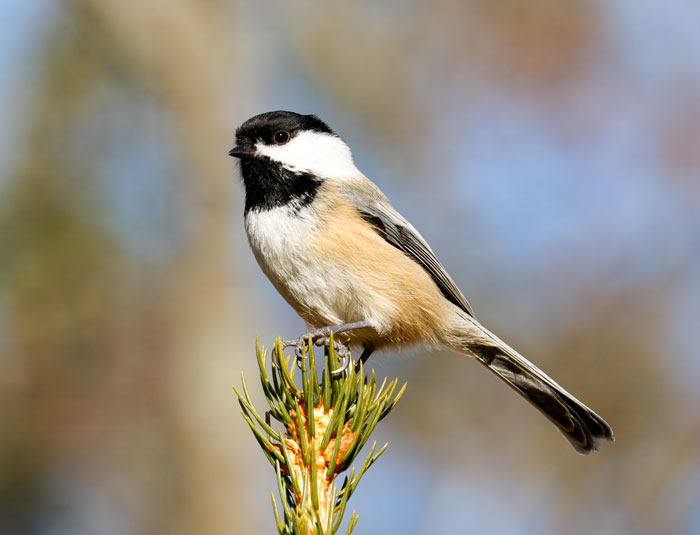
A black-capped chickadee (Poecile atricapillus) perching on a young spruce tree.
As summer turns into fall, many birds will begin to leave from their spring and summer areas to migrate to their winter residences. You can do your part in helping to ensure these birds have successful journeys. It is also important to remember that not all species of birds migrate because they can rely on food sources in their home ranges in order to thrive during the winter months. Here are some helpful ways you can assist birds in your area and see to their survival.

A perching red-breasted nuthatch (Sitta canadensis) in the fall.
Should I feed the birds during the fall?
As the seasons change, feeding birds in the autumn can be a rewarding experience. Bird watchers have the chance to view the changing of different flocks of birds coming through as well as bird visitors that will be taking residence in their yards. Feeding the birds during this time of year will also attract a wider range of birds and thus aiding in the return of migrants to your yard the following spring.
First of all, let us dismiss one of the biggest misconceptions about feeding birds in the fall. It is a myth if birds have a steady food source during the fall, they won’t migrate and during the times when feeders are empty, birds will then starve. Another myth that is simply untrue is that birds rely less on feeders because of an abundance of other natural food sources. Although there will be a change in the number of birds you see at your feeders, you are providing your birds with a reliable food source as well as necessary calories. The food you provide does not prevent migration, it helps it.
Migrating birds require a significant number of calories for the energy necessary for their journeys, and feeders with a variety of foods can provide an energy boost to passing migrants as well as help resident birds build up fat reserves in order to survive during falling temperatures.
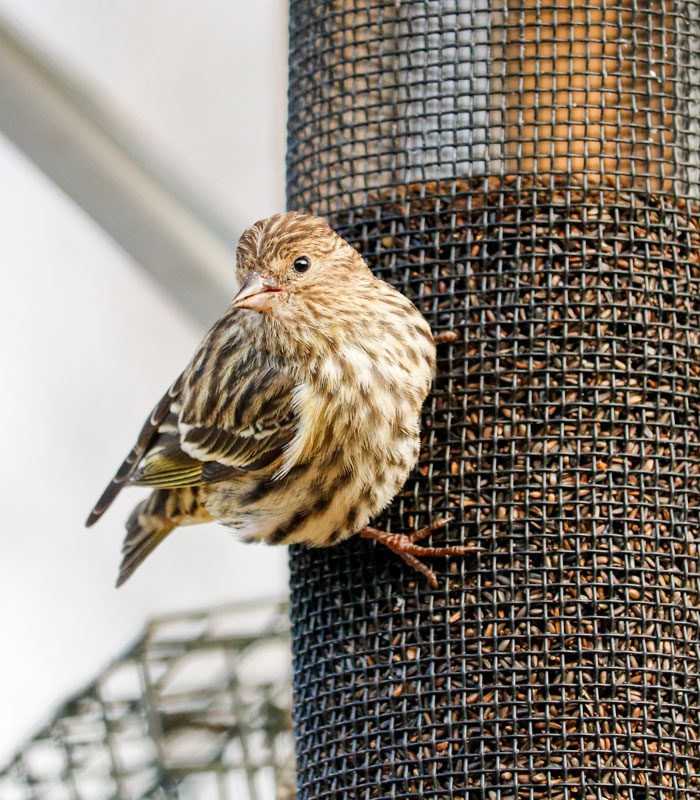
A pine siskin (Spinus pinus) feeding on nyjer.
In order to provide migrating birds with the most nutritious and abundant energy for their journeys, you can offer your feathered friends a variety of high-fat and calorie-dense foods. Top fall foods include black oil sunflower seeds, nuts, millet, suet, nyjer, cracked corn, and nectar. With a fair amount of observation, birders can then adjust the amount of food that is required to meet the needs of their birds.
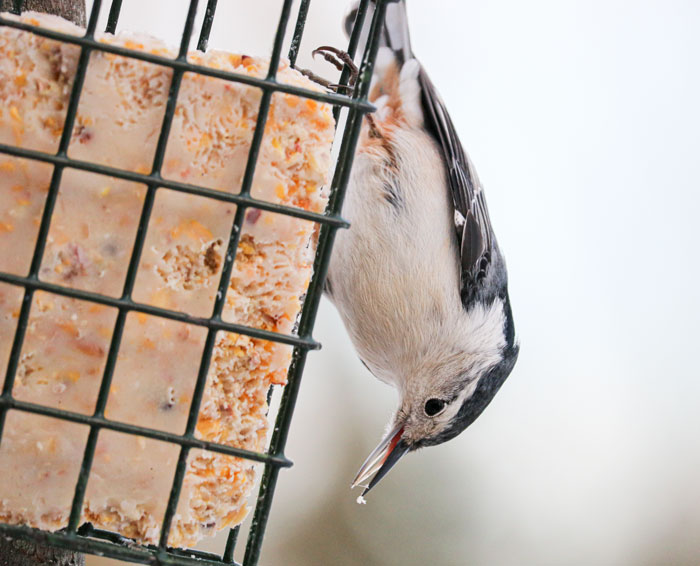
You can also scatter mixed seeds to help the birds that are sometimes too shy to come to the feeders. This includes some species of sparrows, catbirds, towhees, and other species of birds that may choose to feed on the ground. Seeds can also be tossed under sources of natural protection such as shrubbery and brush-piles.
Keep hummingbird feeders out for migrants
Please don’t take your hummingbird feeders down in the fall. Do not believe the myth that hummingbirds will forget to migrate if provided with nectar in feeders. These birds in fact know when to migrate and have the instinct to tell them when it’s time to leave. Hummingbirds will appreciate this supplemental source of energy. Late migrants will also appreciate an extra late-fall food source. Leaving your feeders out will do no harm, and might even do some good. Another point to consider is hummingbirds tend to revisit familiar feeders and your backyard may prove to be a favorite hotspot for the following year.
Add a water feature
Birdbaths and bird fountains are excellent ways to attract birds. During fall migration, you may find a variety of bird species that are not normally found in your area passing through will in fact appreciate a clean and fresh source of water. We had an especially dry fall this year in Maine and I found both several migrating and resident birds enjoyed a place to stop for easy drinking and bathing.
Take inventory of your feeders
The fall is a good time for checking over your feeders that have been used during the summer months as well as ones that have been stored away. Things to consider: Are they in need of a good cleaning? Are there any broken parts? Are they fit for the winter months? If everything looks okay, you can go ahead and put out a variety of feeders and be on your way to enjoying your avian visitors. If not, you can do your research and find which feeders and foods you think will benefit birds in your area.
Tidy-up nesting boxes
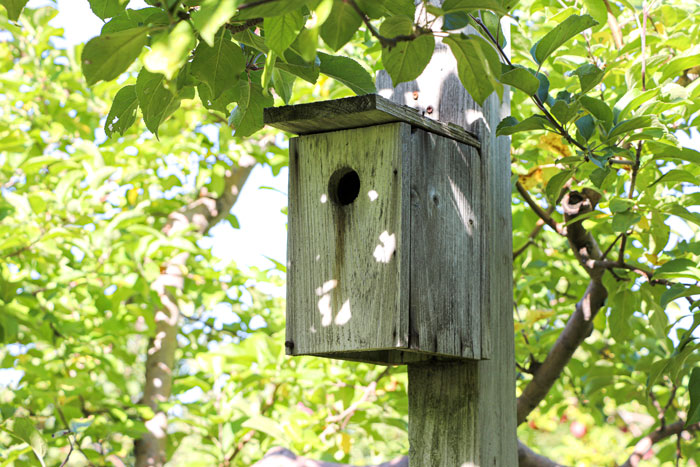
A bluebird box located under an apple tree.
By the end of the breeding season, the insides of nesting boxes, as you can imagine, are quite messy. The fall is a great time to clean and replace your boxes with fresh and clean nesting materials. Also, many species of birds such as chickadees and nuthatches would sure appreciate somewhere to seek shelter with a clean and warm box on cold and frigid nights during the winter.
Make sure your windows are safe
With an increase in migrant activity, windows can have tragic results with flying birds striking glass. In order to decrease the chances of unnecessary bird collisions due to problematic windows around your house, you may want to consider applying bird repellent tape.
Another point to consider in regard to windows is how light attracts and disorients migrating birds at night. As you may know, many birds migrate at night. Light from windows confuses and exhausts them, causing them to become vulnerable to collide with structures. Turning off your lights and covering windows can dramatically reduce these hazards and allow birds to safely continue on their journeys. If you are interested and want to learn more about how artificial light sources harm migratory birds you can check out Cornell’s Lights Out to Protect Migratory Birds. I had the chance to see listen to this webinar and I found it to be rather informative.
Keep cats indoors
Cats are one of the leading causes of bird deaths in urban areas. If you are a cat owner, do the responsible thing and consider making it an indoor pet. You can also consider solutions such as keeping your cat in a confined area, having supervised outdoor visits, or leashing your cat. Did you know the expected life span of an outdoor cat is significantly shorter than that of an indoor cat? On average, cats that are allowed to roam freely outdoors often don’t live to see the age of five. Indoor cats can live to be eighteen to twenty years old.
When I was working as a licensed veterinarian technician, I saw firsthand the outcome of pet owners’ cavalier attitudes toward this issue. One of the most awful parts of my job was taking part in the euthanizing of countless cats hit by cars, attacked by wild animals, etc. It is heartbreaking for all parties involved. Why not do your part and protect your cats and the birds from senseless tragedies.
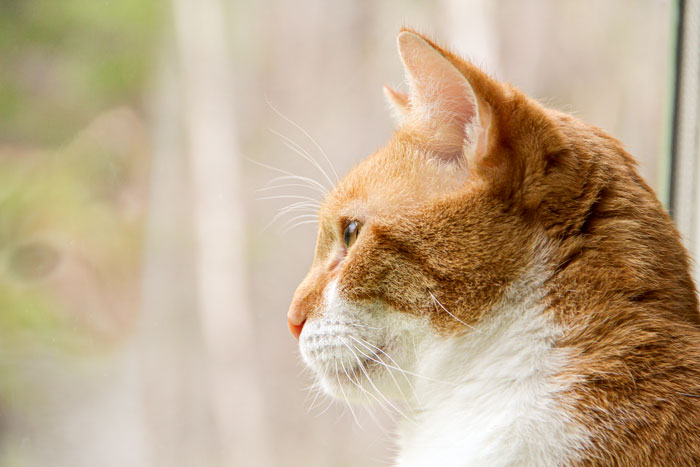
A domesticated orange and white tabby enjoying nature from indoors.
I have also had my own experiences with taking in several stray cats and domesticating them. The last one we had taken in was a lot tougher than the others, but after getting him neutered and with a little time and patience, I think he is now living the good life. He didn’t help out the local bird population much as I witnessed his killing of several birds. At the time, he was feral and needed to do what was necessary in order to survive, but that is no longer the case. I also know for a fact, between diseases and internal parasites as well as the dangers of cars and wild animals, he wouldn’t have survived outdoors too much longer. It is just a simple fact and you can do your part in helping bird populations thrive naturally in regard to this issue.
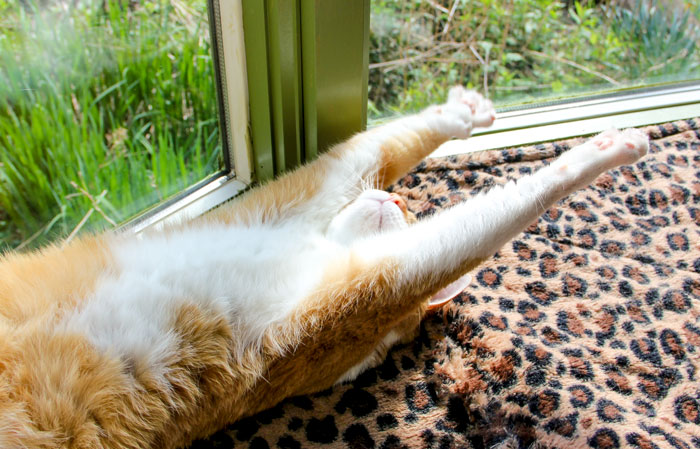
A tabby cat taking a nap in the sun.
Let your lawn grow
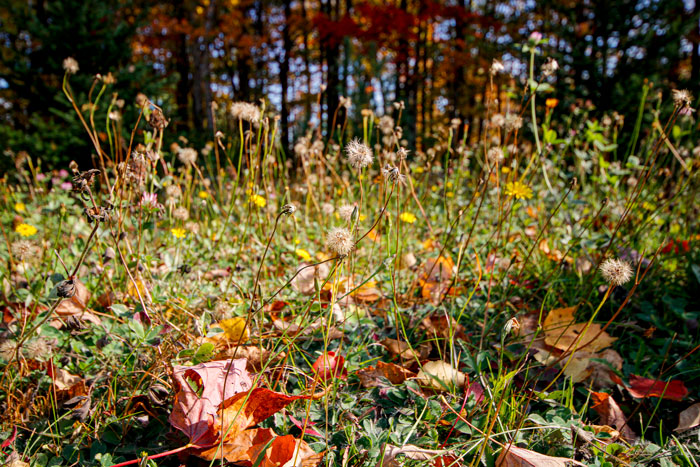
Tallgrass covered in fall leaves.
By late summer, consider stopping mowing a section of your lawn, allowing the long grass to go to seed. Many passing bird species will take advantage of this natural bird food. Tall grasses can also provide to be a beneficial place to rest. Different species of birds will also find this habitat appealing during the winter and may prove to be critical for survivability.
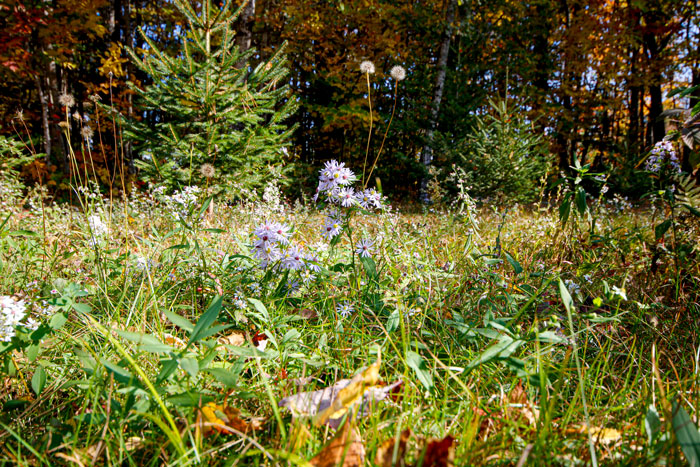
Wildflowers growing in the grass.
Leave the leaves on the ground
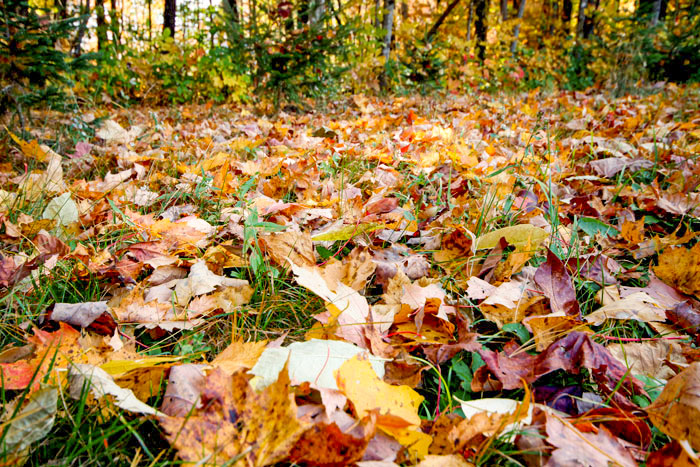
Fall leaves on the lawn.
Instead of removing the leaves from your lawn, you may want to consider leaving fallen leaves. Undisturbed leaf litter and soil will provide a variety of insects and in return, will provide a crucial food source for both migrating and resident birds.
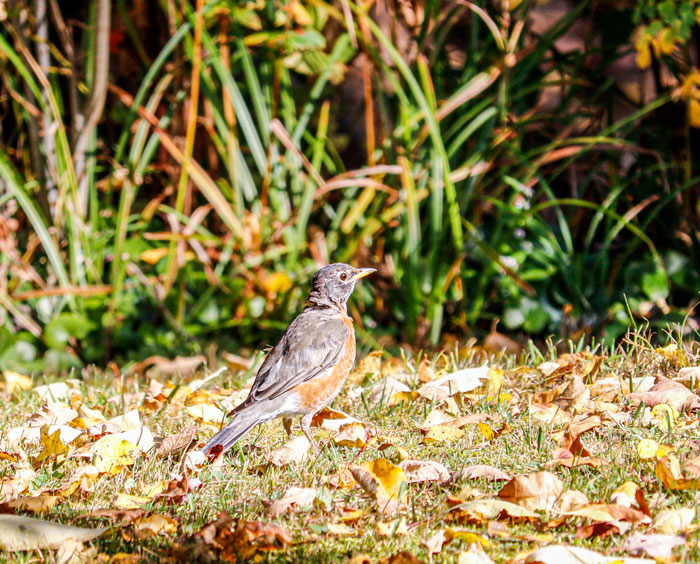
An American robin (Turdus migratorius) in the grass.
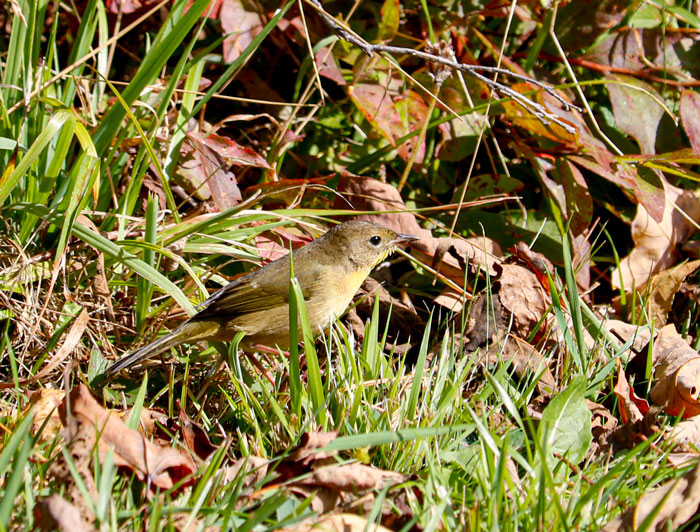
A juvenile common yellowthroat (Geothlypis trichas) in the grass.
Let your gardens go

A variety of flowers in the garden.
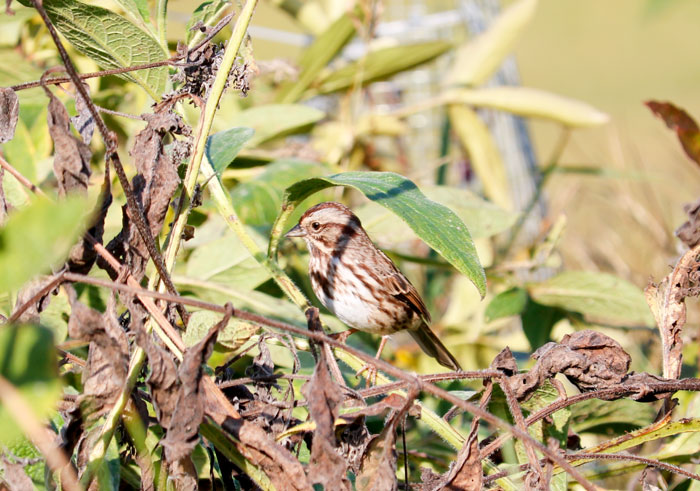
A song sparrow (Melospiza melodia) in the garden.
Although you may feel inclined to cut down the stems of your perennial gardens, you may want to reconsider. The seed heads of flowers such as coneflowers (Echinacea), black-eyed Susans (Rudbeckia hirta), and other native wildflower species can provide a nutritious and supportive food source for birds during the fall. The seeds of plants can also provide protein sources throughout the winter months as well, by housing insect larvae.
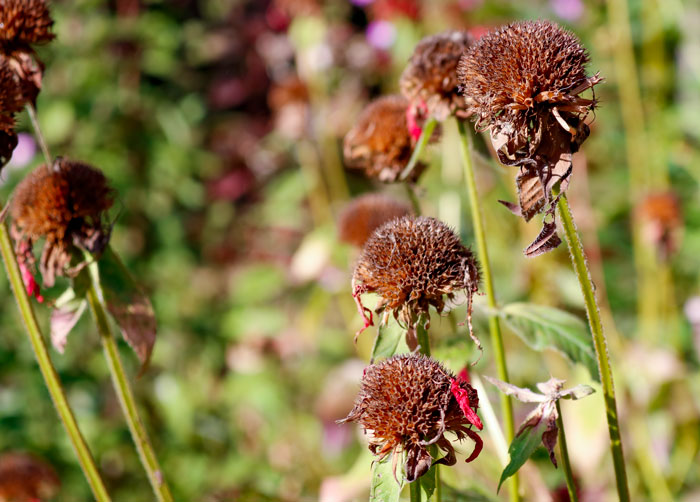
Bee balm (Monarda) in the fall.
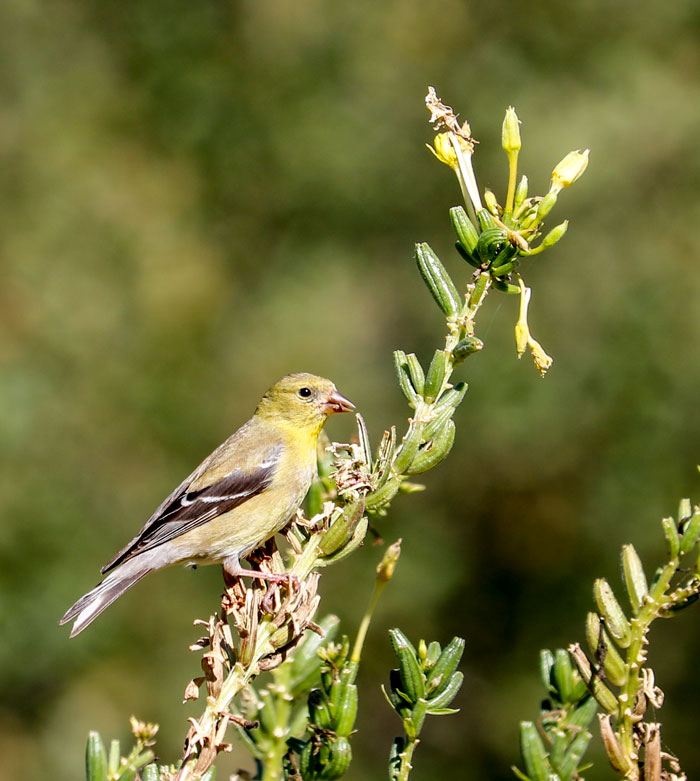
An American goldfinch (Spinus tristis) in a fall garden.
By following these tips, it is possible to attract a wide variety of bird species during fall migration and ensure birds will thrive throughout the seasons. I hope you found this information useful and thank you for reading.
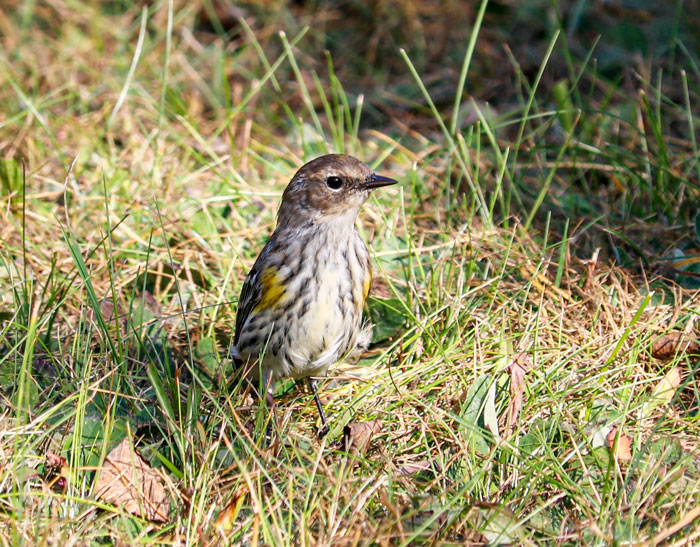
A yellow-rumped warbler (Setophaga coronata) in the grass.
Leave a Reply